Snow Damage – ACCL Waterproofing
IS IT POSSIBLE FOR SNOW TO DAMAGE YOUR BASEMENT?
In the Toronto area, heavy snowstorms are typical. These storms can dump many feet of snow on the ground and stay there for days. When the temperatures rise and the snow melts, there will be nowhere for the excess water to go. You may wind up with a leaking basement if your basement is not prepped for the weather before winter. It’s critical to get moisture out of your basement before it causes more foundation damage. Let’s take a look at how snow might harm your basement.
Damage to the foundation
The most common cause of winter water damage is snowmelt. Winter’s repeated freezing and thawing will erode the foundation over time. Moisture freezes and expands, causing breaches in your basement and allowing more water to enter. This cycle continues, producing cracks in the foundation and compromising its structural stability. A weaker foundation can also result in a cracked pipe, allowing air into your basement and putting your pipes at risk of freezing.
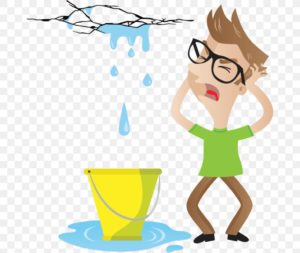
Ice can cause damage to your roof and gutters
An ice dam is a buildup of ice along the edges of your roof that can damage your gutters, get below your shingles, and leak into your home. Hanging icicles are a symptom of an ice dam. Uneven heat on your roof causes ice dams to grow. When the attic is warm, the snow in the middle of the roof melts. That snow falls to the ground and freezes at the rim. When water freezes, it expands, damaging your shingles, causing roof cracks, and breaking off your gutters.
Floors with Cracks
In unfinished basements, any moisture can wreak havoc on hardwood, laminate, carpeted, and even concrete floors. Hardwood and laminate flooring will flex and warp when the moisture is removed and the basement is dry. The glues that hold the floor tiles together will eventually wear out, causing the floor to bubble or the tiles to fall out.
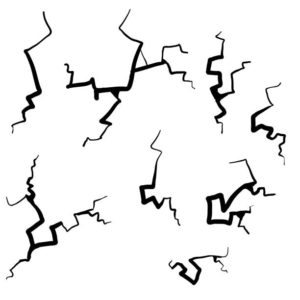
Damage to the Sump Pump
Double-check that your sump pump hose doesn’t have any low locations where water can accumulate. Make sure the water is flowing freely away from your house. The sump will cease working if the water collects and freezes, and it may possibly cause irreparable damage to the system. Because sump pumps are located in the basement and are out of sight, many homeowners overlook them. The sump pump, on the other hand, is one of the most important elements in adequately protecting your pipes from freezing damage.
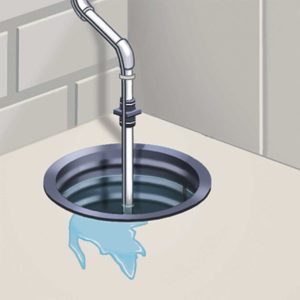
At ACCL Waterproofing, we have over 30 years of experience in delivering leak-free waterproofed basements for our customers. Contact us right away to schedule a complimentary estimation with one of our friendly and knowledgeable staff members.
Take advantage of the winter months to have us look at your basement and help you determine how best to address your basement leakage problems.

Get the job done RIGHT – Hire a professional Waterproofing company!
Want to know more about our waterproofing process? Give us a call at 416-759-2995
Rely On our ACCL Wet Basement Waterproofing Experts
Don’t Drown in a wet basement!
Rely On Wet Basement Waterproofing Experts
If you’ve noticed foundation cracks, spots, water, mold, and mildew, don’t ignore the signs or it could lead to more damage and possible health effects.
The basement waterproofing specialists at ACCL Waterproofing know how to repair your basement and foundation walls and keep moisture out of your basement. We would be pleased to develop a guaranteed solution to keep your basement dry!
Dry Basement: ACCL Waterproofing
WHY IS IT SO IMPORTANT TO KEEP YOUR BASEMENT DRY THIS WINTER?
Winterizing our homes, from storm windows to roof repair, takes a lot of time. What about the basement, though? Our basements, as well as the foundations of our houses, require attention.
When it comes to wreaking havoc on our homes, winter is the worst. That alone is reason enough to ensure that your home is well-protected during the winter months.
WHY IS IT SO IMPORTANT TO KEEP YOUR BASEMENT DRY DURING THE WINTER?
During the winter months, there is greater indoor activity, even in our basements. It’s crucial to keep it dry whether it’s totally finished or being used for storage.
MOLD AND MILDEW
Mold and mildew can grow quickly in the absence of sunlight and heat. They can grow to be quite large before you even realize it. It can begin to emit a foul stench and penetrate objects such as carpets, clothing, and furniture.
The odour and mold can be deadly, and it’s nearly impossible to get rid of them. Mold will be kept at bay in your basement if you keep it warm and dry. It can ruin your furniture and clothing to the point that you’ll have to toss them away.
LEAKS
Leaks may be discovered in many areas of your basement. Groundwater, melted snow, rainfall from the eaves, or even a busted pipe can wreak havoc on a foundation with weak places.
During the colder months, the temperature can swing dramatically, causing large amounts of water to flow and subsequently freeze. The sun’s heat can melt ice or snow, causing it to run into the basement, even on a cold day.
If the leaks get severe enough, they can cause damage to flooring, carpets, and the electrical system, resulting in electric shock, power outages, and appliance damage.
CRACKS
Your foundation will always have minor flaws in it. They can be found on the walls, ceilings, doors and windows, and stairwells. Small cracks that are left to their own devices aren’t a big deal.
In the winter, however, due to the changing temperature, water might accumulate in the cracks, thaw, freeze, and then melt again. Because ice takes up more area than water, it will require additional space to expand. These ice fissures can lead to much more serious issues.
THE FOUNDATION IS WEAKENED
When water or moisture seeps into the concrete’s cracks, gaps, and pockets, it can lead to worse difficulties and holes. There can be a lot of damage caused by water freezing and melting, as well as water flowing around in cracks and around the foundation’s base.
It’s possible that shifting will occur if the foundation is destroyed. Damaged or broken door and window frames, slanted floors, and even a wall breaking or collapsing are all possibilities.
THINKING ABOUT WATERPROOFING YOUR BASEMENT?
A few leaks or cracks might quickly add up. If you have dampness or water damage, get it cleaned as soon as possible. The best approach to keep your basement dry is to have it waterproofed by a professional.
Take advantage of the winter months to have us look at your basement and help you determine how best to address your basement leakage problems.

Get the job done RIGHT – Hire a professional Waterproofing company!
Want to know more about our waterproofing process? Give us a call at 416-759-2995
Rely On our ACCL Wet Basement Waterproofing Experts
Don’t Drown in a wet basement!
Rely On Wet Basement Waterproofing Experts
If you’ve noticed foundation cracks, spots, water, mold, and mildew, don’t ignore the signs or it could lead to more damage and possible health effects.
The basement waterproofing specialists at ACCL Waterproofing know how to repair your basement and foundation walls and keep moisture out of your basement. We would be pleased to develop a guaranteed solution to keep your basement dry!
Sinkhole Repair – ACCL Waterproofing
Taking Care of a Sinking Foundation – ACCL Waterproofing
Although it may not appear so, the earth beneath you is shifting. Granted, it moves slowly enough that most of us don’t notice. While we may not notice, our homes undoubtedly do. Over time, soil movement can cause foundations to become unbalanced or sink, posing serious threats to the home’s structural integrity and livability. Why does this happen, and what can you do to address and resolve the issue? Let’s take a look!
THE SOIL:
The soil and rock composition where you reside, as well as how the earth was compacted, will determine whether or not your foundation is at risk of sinking. Sinking foundations are frequently related with expansive clay. Gravel, sand, and rock will not move or shift over time in the same manner that it will. This will be a concern in many parts of the GTA and Ottawa. There are a few options for you to consider, thankfully.
HOW TO MAKE THE SINKING STOP:
Your major goal is to put your house back in the right place. This will begin by determining the extent of any existing damage. The foundation will be thoroughly examined for any potential flaws. A pier and beam foundation repair or a slab foundation repair are two options. Which one you choose will be largely determined by the structure of your home. Typically, only one or two sides will require foundation work to stop the sinking. You can reverse the sinking foundation and no longer be at an incline by adding more material and helping to disperse the weight across a larger region.
NEEDING PROFESSIONAL GUIDANCE:
You’ll need the expertise and care of a professional foundation repair specialist if you have problems with your foundation sinking. In order to identify the best solution, a considerable deal of thought must be applied. The angle at which the house will sink, the foundation’s structural integrity, and the ideal position to offer additional support will all have to be thoroughly thought out ahead of time. The sooner you get an expert to examine your property, the lower your overall charges will be. Don’t leave it until it’s too late and serious damage to your home’s foundation has occurred.
Take advantage of the winter months to have us look at your basement and help you determine how best to address your basement leakage problems.

Get the job done RIGHT – Hire a professional Waterproofing company!
Want to know more about our waterproofing process? Give us a call at 416-759-2995
Rely On our ACCL Wet Basement Waterproofing Experts
Don’t Drown in a wet basement!
Rely On Wet Basement Waterproofing Experts
If you’ve noticed foundation cracks, spots, water, mold, and mildew, don’t ignore the signs or it could lead to more damage and possible health effects.
The basement waterproofing specialists at ACCL Waterproofing know how to repair your basement and foundation walls and keep moisture out of your basement. We would be pleased to develop a guaranteed solution to keep your basement dry!
Deck Waterproofing: ACCL Waterproofing
Deck Waterproofing: ACCL Waterproofing
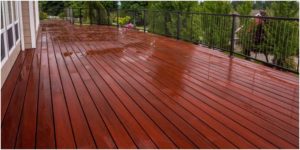
Being able to have an outdoor deck is one of the perks of being a homeowner. Decks are fantastic locations to connect with friends and family, or simply relax and enjoy some alone time. Regardless of how you intend to use your deck, it will need to be maintained on a regular basis. Washing the deck on a regular basis is part of regular maintenance, as is having your deck waterproofed. Even if your deck has been waterproofed previously, it is critical to have it waterproofed again for good upkeep.
You might be wondering how often you should waterproof your deck. To begin, think about the difference between having your deck sealed and having it waterproofed. While sealants do provide some waterproofing, they do not provide the same amount of protection as waterproofing. Finally, you’re not just protecting your deck from water damage; you’re also safeguarding your home. If a deck can’t shed water, moisture and dampness will build up directly next to your house.
Mold and mildew will eventually build on your walls and possibly your home’s foundation as a result of excessive moisture. It’s a good idea to get your deck waterproofed once a year, especially if you live in an area with a lot of rain. Another factor to consider is whether you reside in a region that receives a lot of direct sunshine throughout the year. If this is the case, your deck will be exposed to harmful UV rays, which may fade the colour, necessitating more frequent waterproofing than once a year.
Pouring a few droplets of water onto the wood is a useful test to see if it’s time to get your deck waterproofed again. Your deck is still waterproofed if the water droplets bead up. If the water soaks into the wood, though, your deck is no longer protected from the weather, and it’s time to waterproof it.
As a new homeowner in Canada, you may be wondering how to keep your beautiful deck in good condition for future generations. Being mindful of the material and coating on your deck, as well as identifying when it is time to renovate, are some of the initial measures. Here are five signals to check for that indicate you should pay care to your deck before any additional issues arise.

Do you have any stains on the ceiling beneath your deck?
One of the most obvious symptoms that your deck needs to be waterproofed is this. Have you noticed any damp water spots on the ceiling of your living room below the deck since the last rain? The easiest way to identify stains is on hardwood surfaces, however stains can also appear on concrete decks.
Does the present deck material have any damaged, rusted, or loose areas?
Inspect your deck thoroughly for flaws in all areas. Weather, as well as water from a hose, a little spill, or a hot tub, can wreak havoc on your deck. Remember to inspect your deck’s metal flashing for any flaws.
Is there any sagging on your deck’s surface?
This is a crucial consideration, particularly for wooden decks. Dry-rotted plywood, frame, or termites are often indicated by a soft plywood substrate. If you see any of these indicators early on, you’ll have a greater chance of keeping your deck in good shape for years to come.
Is the surface of the present deck materials peeling or flecking?
True, all deck stains need to be re-coated after a specific length of time, so keep track of when your deck has to be re-coated. If possible, learn about the compounds in your coating material so you can predict how your deck will react to environmental factors.
Do you notice any noticeable cracks?
As part of a tree, wood absorbs and stores moisture due to its inherent architecture. Saw cuts and exposed end grain will absorb moisture from dry wood. The wood will expand and shrink as a result of exposure, creating cracking and splitting in your deck.
Take advantage of the winter months to have us look at your basement and help you determine how best to address your basement leakage problems.

Get the job done RIGHT – Hire a professional Waterproofing company!
Want to know more about our waterproofing process? Give us a call at 416-759-2995
Rely On our ACCL Wet Basement Waterproofing Experts
Don’t Drown in a wet basement!
Rely On Wet Basement Waterproofing Experts
If you’ve noticed foundation cracks, spots, water, mold, and mildew, don’t ignore the signs or it could lead to more damage and possible health effects.
The basement waterproofing specialists at ACCL Waterproofing know how to repair your basement and foundation walls and keep moisture out of your basement. We would be pleased to develop a guaranteed solution to keep your basement dry!
Crawl Space Waterproofing – ACCL Waterproofing
Crawl Space Waterproofing – ACCL Waterproofing

You may not give your crawl space much thought, but it is a vital structural element that lifts your house off the ground to help prevent flooding and pest infestations. Crawl spaces, unlike slab foundations, allow for the installation of wiring, plumbing, and ducting for simple access at a fraction of the expense of a basement. You can also use the crawl space to store objects that aren’t used often.
There is one drawback to crawl spaces: they, like basements, are prone to moisture problems. Because the crawl room is below the main living area, you may believe that water incursion is unimportant. This, however, is incorrect. Learn why you need to waterproof your crawl space and what options you have for keeping moisture out.
WATERPROOFING OF CRAWL SPACE BENEFITS
For a variety of reasons, homeowners are urged to waterproof their crawl spaces.
TEMPERATURE MANAGEMENT
The temperature in the rest of your house is affected by high humidity in the crawl area, making it feel colder or hotter than it should be. To keep comfortable, you may have to turn on the heater or air conditioner more frequently.
Because a waterproofed crawl space is cold and dry, it has less of an impact on home comfort. As a result, you save money on energy by lowering the length of time your HVAC system is running.
IMPROVING THE QUALITY OF INDOOR AIR
Up to 50% of the air in a crawl space can escape and enter the dwelling room. If the air is wet, moldy, and fumy, it will certainly affect the quality of your indoor air. As a result of overexposure to moldy air, sensitive people may experience headaches, respiratory distress, and allergy symptoms.
Mold growth is slowed when your crawl space is clean and dry. This keeps hazardous spores out of your family’s lungs, making breathing simpler for everyone.
PROTECT THE STRUCTURAL INTEGRITY OF YOUR HOME
Excess moisture can cause wood to decay, metal to rust, and drywall to be damaged. Mold and termites thrive in this type of climate, which can eat away at your home’s structure. Your floor joists may decay to dangerous levels if left unattended, resulting in exorbitant repair costs.
The addition of a vapour barrier to the crawl space keeps moisture out. This provides you with the assurance that your home is safe from the ravages of wood rot, mold, and termite infestation.
ELECTRICAL HAZARDS MUST BE REDUCED
Moisture and electricity are incompatible. Water problems could result in electrical shorts, rusty wires, or even a house fire if you have wiring running through your crawl space.
Maintaining the safety of your family requires ensuring that your electrical system is clear of dampness. Consider waterproofing the crawl space if you find difficulties with your wiring. This will reduce the chance of electrocution and fire.
PLUMBING AND DUCTWORK SHOULD BE PRESERVED
Water pipes, sewer lines, and air ducts are almost certainly running through your crawl area. This location makes them simple to maintain and repair, although rust can develop if the humidity is too high. Corrosion can cause pipes to break or ducting to deteriorate over time.
With crawl space waterproofing, you can extend the life of your plumbing and air duct systems.
MAINTAIN THE VALUE AND INSURABILITY OF YOUR HOME
Mold growth, structural damage, poor air quality, and comfort difficulties are all problems linked with excess moisture in the crawl space that might hinder your ability to sell your home in the future. Even if you don’t plan to move, having a damp crawl area can make homeowners insurance more difficult to obtain.
A vapour barrier in the crawl space may not raise property value immediately, but it may prevent problems from arising that could be detrimental. In this sense, crawl space waterproofing is an excellent investment that pays off handsomely.
SIGNIFICANCE OF WATERPROOFING FOR CRAWL SPACE
Early detection of moisture problems offers you the opportunity to address the problem before irreversible harm occurs. Unfortunately, because the crawl space is one of the least visited regions in your home, the vast majority of water leaks go unreported for a long time.
Plan to inspect your crawl space twice a year, once in the spring and once in the fall, to ensure you identify leaks early. When you do, keep an eye out for the following symptoms that your crawl space needs waterproofing:
- Water that isn’t moving
- a musty smell
- Mold and mildew development
- An infestation of insects or rodents
- Pipes or ductwork that are rusted
- Wood that has rotted
- The walls of the crawl space have white deposits on them.
- Your home’s exterior paint is peeling.
- Throughout the house, there are issues with air quality.
WATERPROOFING METHODS FOR CRAWL SPACE
The type of foundation you have, where the water is coming from, if you have a storm drain near your property, and the grade of the soil around the foundation all influence the strategies utilised to waterproof a crawl space.
The key to waterproofing your crawl area is to use a vapour barrier that is both waterproof and condensation-proof. This keeps moisture from evaporating and entering the crawl space in the soil beneath and around your home’s foundation. A vapour barrier is a heavy-duty polyethylene sheet that has been particularly constructed to deflect water rather than absorb it.
Waterproofing techniques can be used on the outside of your house or inside the crawl area.
WATERPROOFING ON THE OUTSIDE
Because excavation is required to waterproof a crawl space from the outside, this method is seen as time-consuming. Exterior waterproofing is best done at the initial construction phase or in conjunction with another renovation, repair, or landscaping job.
To keep water out, exterior waterproofing entails putting a moisture barrier around the foundation walls. A drainage system is frequently constructed to help alleviate hydrostatic pressure on the walls, which can lead to the formation of fractures over time.
WATERPROOFING IN THE INTERIOR
Interior waterproofing is typically just as effective as external waterproofing and requires less disruption. Installing a vapour barrier on the dirt floor, partway or all the way up the walls, and occasionally even the ceiling is the first step. Crawl space encapsulation is a method of keeping all outside moisture out of the crawl area.
After that, further methods such as a sump pump, dehumidifier, ventilator, or gravity discharge system may be utilized to drain water and dry off any remaining moisture in the crawl space. Combining internal waterproofing systems may be the most effective method.
Take advantage of the winter months to have us look at your basement and help you determine how best to address your basement leakage problems.

Get the job done RIGHT – Hire a professional Waterproofing company!
Want to know more about our waterproofing process? Give us a call at 416-759-2995
Rely On our ACCL Wet Basement Waterproofing Experts
Don’t Drown in a wet basement!
Rely On Wet Basement Waterproofing Experts
If you’ve noticed foundation cracks, spots, water, mold, and mildew, don’t ignore the signs or it could lead to more damage and possible health effects.
The basement waterproofing specialists at ACCL Waterproofing know how to repair your basement and foundation walls and keep moisture out of your basement. We would be pleased to develop a guaranteed solution to keep your basement dry!
Below Grade Waterproofing: ACCL Waterproofing
Below Grade Waterproofing: ACCL Waterproofing

You’ve probably had your outside deck or indoor floor space waterproofed in some way. You may only be familiar with systems that are above grade. Did you know that waterproofing for spaces below ground level is also available? If you have a basement or a below-grade deck, you’ll need to consider a below-grade waterproofing coating. As you may know, water can readily get into these spaces. Basements are especially prone to flooding and moisture.
You could end up with serious floor deterioration difficulties down the road if you don’t waterproof your floors. When it comes to waterproofing below grade, there are three different styles to consider. You should also consider a decent drainage system, which comes with a variety of solutions.
Examples of Common Waterproofing Projects Below-Grade
To give you a better idea of where below-grade waterproofing is used, it goes far beyond residential applications. It’s commonly utilized for foundation walls and slabs-on-grade. It’s frequently used in public spaces on plaza decks that are built below ground level.
It’s utilized on planters and even green roofs in public buildings and apartments. Other areas to look are sumps and elevator pits, especially during the development period of major structures. Any slabs in a structure or residence usually necessitate below-grade waterproofing to prevent potential water damage. It’s time to consider which system you’ll need: positive side, negative side, or blind side, depending on where you need this type of waterproofing done.
What is Positive Side Waterproofing, and how does it work?
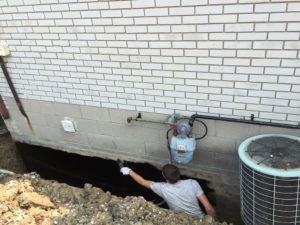 On the outside of all buildings, you’ll notice positive side waterproofing. It will necessitate access to the exterior of any building or residence. This, however, is not always achievable. In cases when this isn’t possible, you may have to consider negative or blind-side alternatives. Positive side waterproofing, on the other hand, is usually more favourable because it is in a more prominent location. This procedure makes it easy to inspect any faults in the waterproofing membrane than the other ways.
On the outside of all buildings, you’ll notice positive side waterproofing. It will necessitate access to the exterior of any building or residence. This, however, is not always achievable. In cases when this isn’t possible, you may have to consider negative or blind-side alternatives. Positive side waterproofing, on the other hand, is usually more favourable because it is in a more prominent location. This procedure makes it easy to inspect any faults in the waterproofing membrane than the other ways.
Here are a few things to think about when it comes to positive side waterproofing:
- Select the best waterproof material with the help of your waterproofing team.
- Inquire if you require additional insulation.
- Consider whether or not vapour barriers are required.
- To keep excess water out of the region, drainage may be required.
Waterproofing has a negative side
You’ll only use this on inner surfaces as an alternative to positive side waterproofing. Because the structure where you’re applying the compound may move or crack over time, it’s not the ideal answer. If this happens, you may need to go back in and apply extra waterproofing in the future to restore the damage. It’s not always a hardship when you have a customized application that’s so simple to use.
Waterproofing on the Blind Side
Typically, this option is used on the underside of structural slabs. Blind-side waterproofing is only used where there are property line difficulties or other constraints on where the coating can be applied. The design issues are the same as on the positive side, including determining if drainage is a viable alternative for keeping water out.
Drainage Types to Consider
You’ll need to examine whether you’ll need drainage once you’ve successfully applied below-grade waterproofing to your home or structure. Your waterproofing crew can assess the situation and help you examine your alternatives.
French drains and under-slab drainage systems are frequently employed. Consider drainage boards or footing drains in addition to these. If the terrain is fully flat, sump pumps are also required. Sump pumps may be readily hardwired into your electrical system for increased reliability.
Take advantage of the winter months to have us look at your basement and help you determine how best to address your basement leakage problems.

Get the job done RIGHT – Hire a professional Waterproofing company!
Want to know more about our waterproofing process? Give us a call at 416-759-2995
Rely On our ACCL Wet Basement Waterproofing Experts
Don’t Drown in a wet basement!
Rely On Wet Basement Waterproofing Experts
If you’ve noticed foundation cracks, spots, water, mold, and mildew, don’t ignore the signs or it could lead to more damage and possible health effects.
The basement waterproofing specialists at ACCL Waterproofing know how to repair your basement and foundation walls and keep moisture out of your basement. We would be pleased to develop a guaranteed solution to keep your basement dry!

